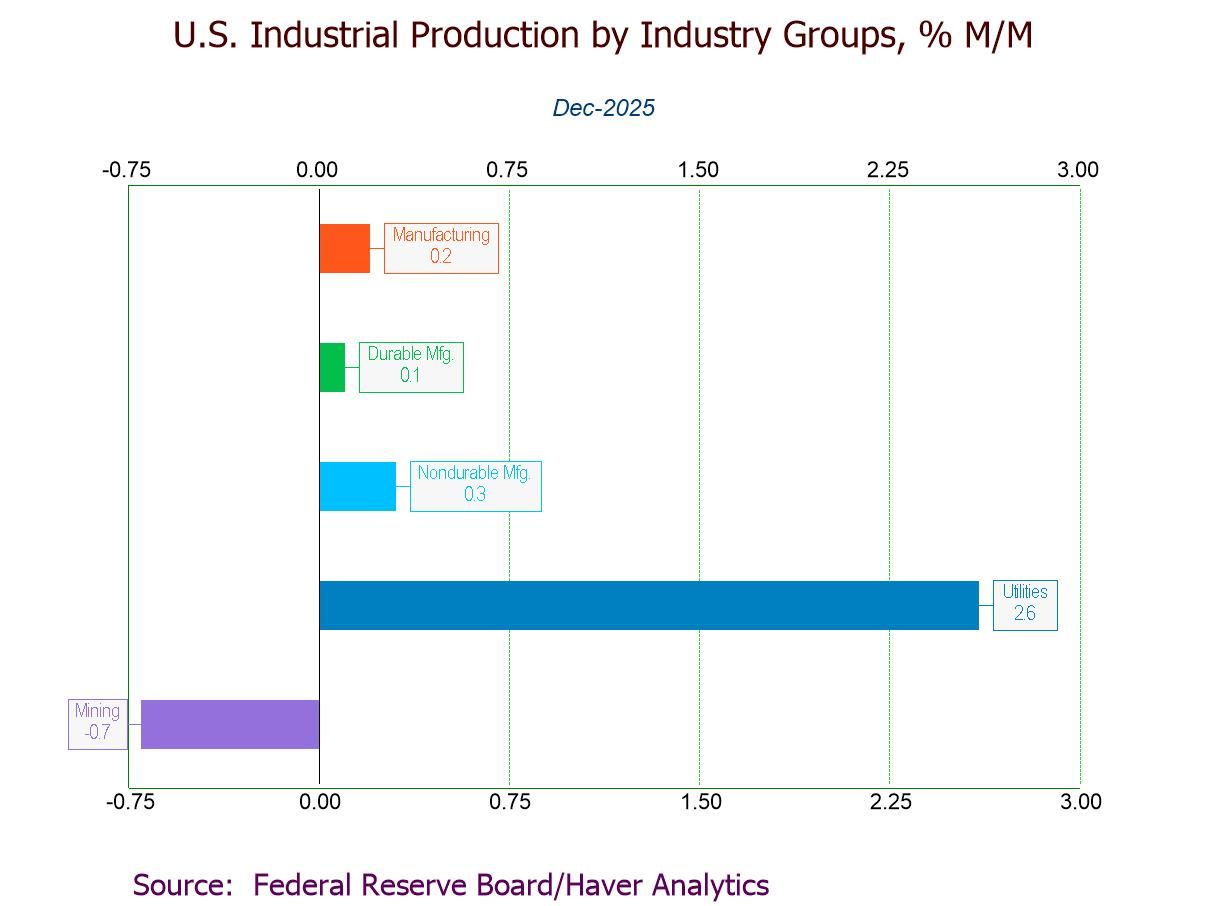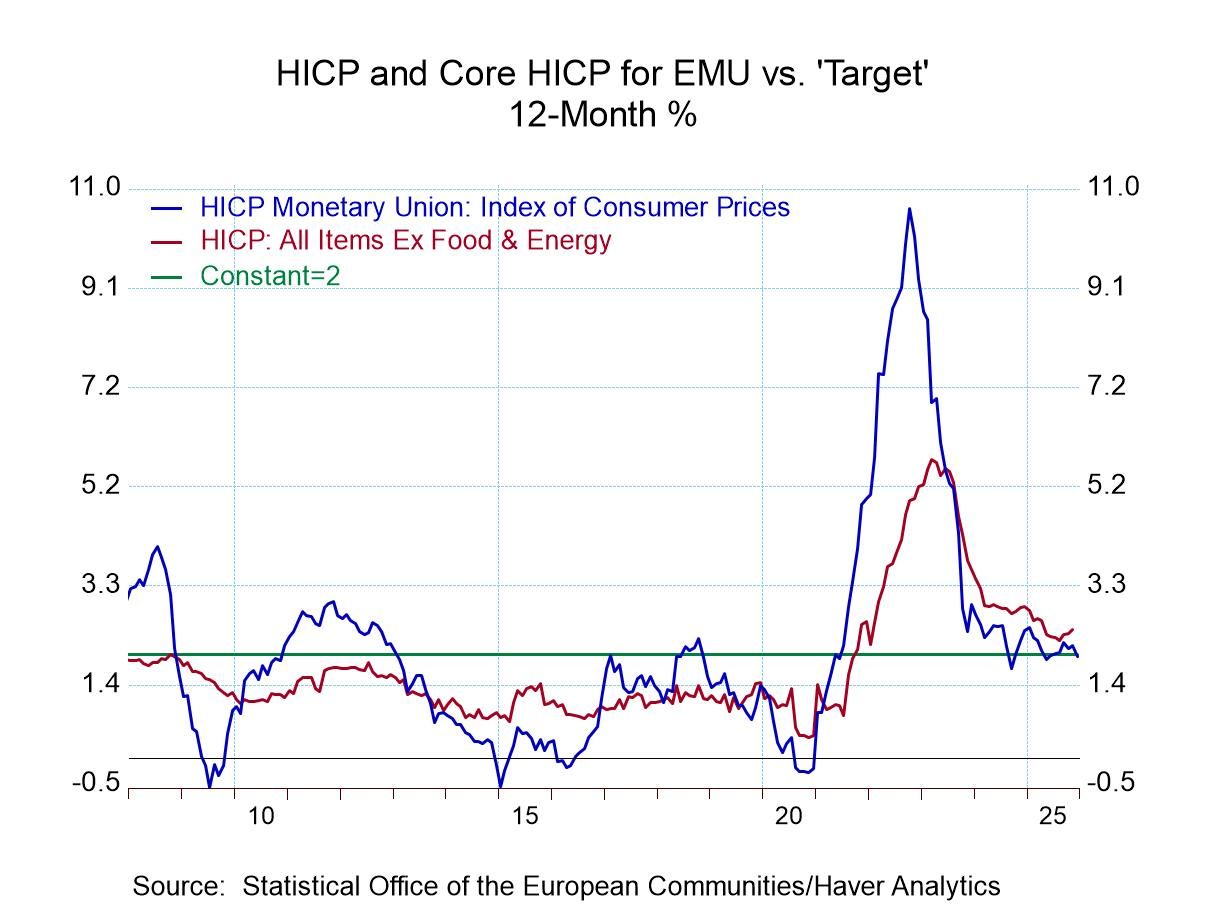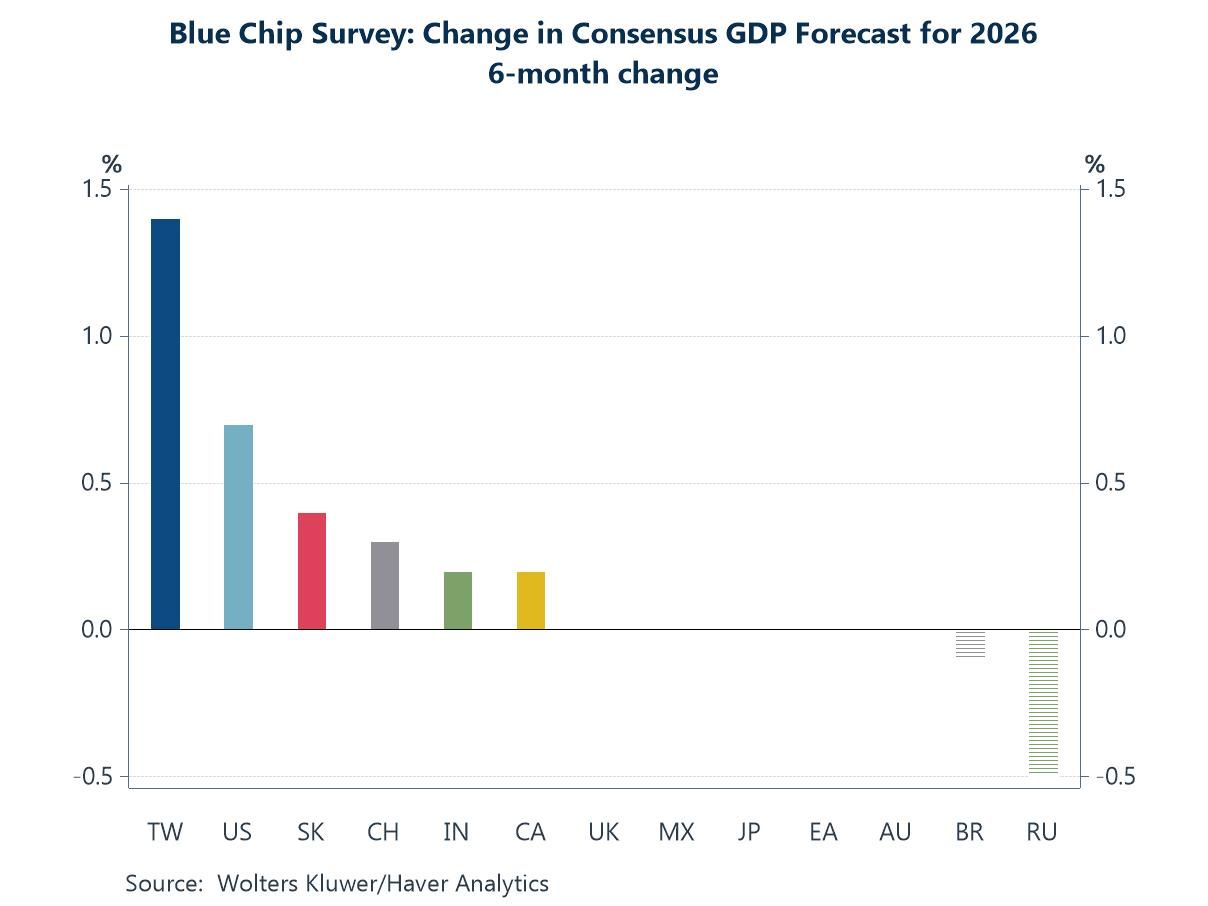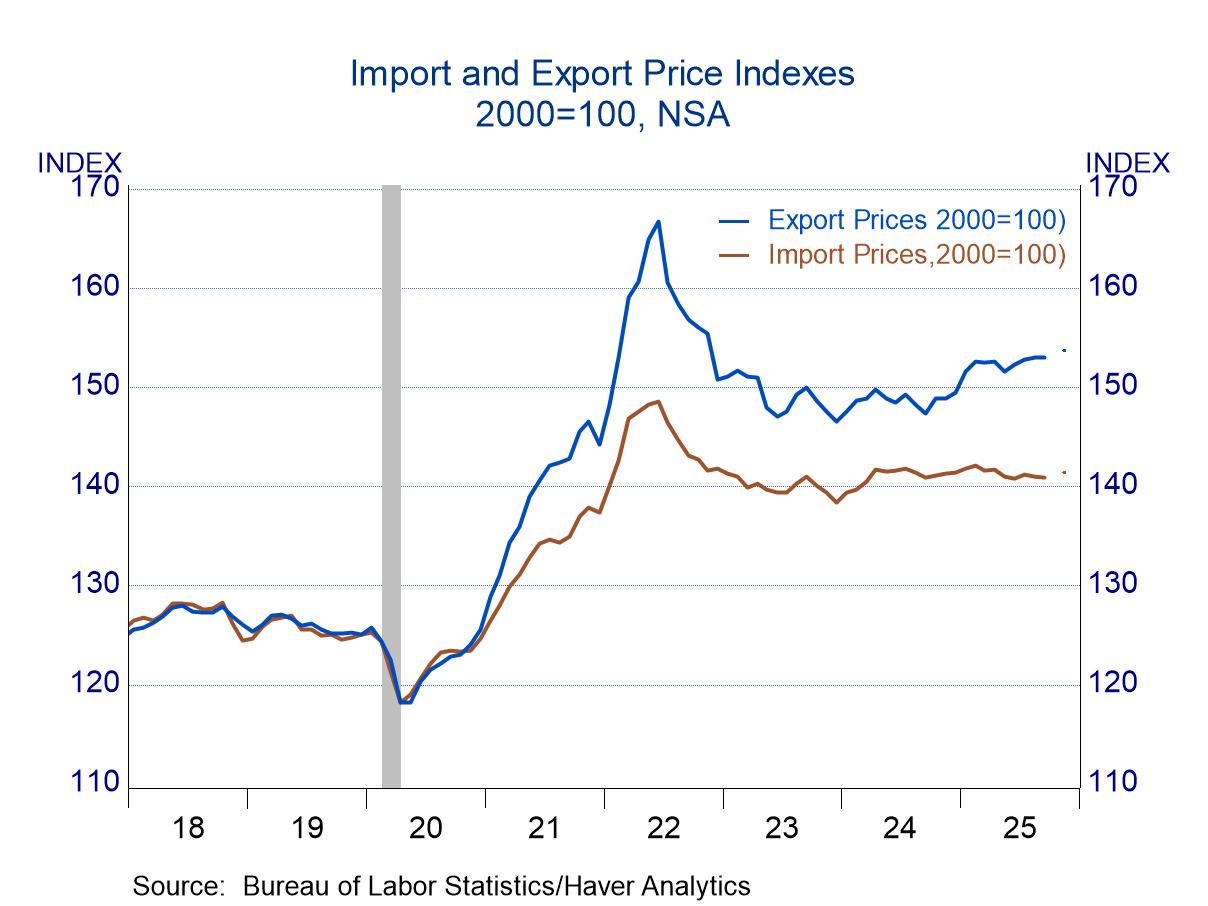 Global| Jun 09 2023
Global| Jun 09 2023Charts of the Week (June 9, 2023)
by:Andrew Cates
|in:Economy in Brief
Summary
Financial market sentiment has continued to improve in recent days despite conflicting signals from the economic data flow. This improvement can be traced, in part, to the removal of uncertainty surrounding the US debt ceiling. However, as indicated by our first two charts this week, there is now growing evidence to suggest that headline inflationary pressures are receding in most major economies, which could have been a further contributing factor. Nevertheless, as our next three charts this week also suggest, the world economy is not yet out of danger. Among other potential negatives, this week's data flow signalled a big slowdown in export growth in China (chart 3), still-fragile growth expectations from the global investor community (chart 4), and increasing inventory imbalances in the US economy (chart 5). Lastly, and on a completely different and more structurally-rooted note, our final chart this week looks at some of the challenges Asian economies face in their transition to a Green economy (chart 6).
Supply chain pressures and commodity prices Incoming data over the last few weeks mostly suggest that inflationary pressures are receding. A key reason for this concerns the trends in chart 1 below. According to an index calculated by the New York Fed, global supply chain pressures were more than 4 standard deviations above normal at the end of 2021. Fast forward to May 2023, and they are now estimated to be nearly 2 standard deviations below normal. Consequently, the intense upward pressure on commodity prices caused by these supply chain issues has also reversed, as evidenced by the deflation that can be observed in the CRB index of late.
Chart 1: Global supply chain pressures versus the CRB index of commodity prices

Europe’s upstream price pressures Those trends, in turn, are also generating downward pressure on producer prices, which tend to be a key leading indicator for consumer price inflation. This is evidenced in chart 2 below showing a 95% correlation between PPI inflation (advanced by 3 months) and CPI inflation in the euro area over the past 20 years. This week’s data showed that PPI inflation rose by just 1% in the year to April down from around 43% y/y last August. That bodes extremely well for the likely evolution of CPI inflation in the euro area in the period ahead.
Chart 2: Weak euro area PPI inflation is leading CPI inflation to lower levels

China’s trade China's trade continues to play a crucial role in the global economy. That’s why this week’s trade data for May were concerning. More specifically China’s exports fell by 7.5% from a year earlier in May while imports were down 4.5%. Abstracting from month-to-month volatility and the overall trends, moreover, can best be described as pedestrian, as evidenced in chart 3 below.
Chart 3: China’s trade data suggest the global growth backdrop remains weak

Investors’ growth expectations The Sentix survey measures the overall sentiment and expectations of financial market participants, particularly investors, regarding the future prospects for the world economy and financial markets. And this month’s survey revealed that those expectations remain fragile. Growth expectations in the US and euro area admittedly perked up a little, but from a very weak base. Meanwhile, and in sympathy with the message about China’s trade above, expectations regarding growth in Asia took a turn for the worse, albeit from a slightly higher base.
Chart 4: June’s Sentix survey suggest weak underlying global growth momentum

US inventories The fragilities in the world economy are probably one reason too why the odds of a recession outcome for the US economy in the period ahead remain high. Indeed the latest surveys from the Institute of Supply Management (ISM) suggest the manufacturing sector may already be in recession and that activity in non-manufacturing slowed sharply in May. Both sectors, moreover, revealed acute inventory imbalances, as evidenced in chart 5 below. Rising inventory levels potentially indicate excess supply, heightened financial strain and ebbing profitability with ripple effects for the broader economy.
Chart 5: US ISM surveys suggest growing inventory imbalances

The Green Energy Transition On a completely different note, our final chart this week homes in on Asia's transition to a green economy. That transition requires a shift away from fossil fuels and high-carbon industries, but the rapid growth of sectors like manufacturing and construction in the region presents challenges in terms of transitioning to cleaner alternatives. As shown in Chart 6 below, coal remains a relatively affordable energy source in the region. This affordability, coupled with its widespread availability, has resulted in heavy reliance on that commodity in the area. Limited financial resources further complicate the shift from coal to renewable energy sources, requiring significant investments and substantial support from policymakers.
Chart 6: A comparison of energy generation costs in developing Asia

Andrew Cates
AuthorMore in Author Profile »Andy Cates joined Haver Analytics as a Senior Economist in 2020. Andy has more than 25 years of experience forecasting the global economic outlook and in assessing the implications for policy settings and financial markets. He has held various senior positions in London in a number of Investment Banks including as Head of Developed Markets Economics at Nomura and as Chief Eurozone Economist at RBS. These followed a spell of 21 years as Senior International Economist at UBS, 5 of which were spent in Singapore. Prior to his time in financial services Andy was a UK economist at HM Treasury in London holding positions in the domestic forecasting and macroeconomic modelling units. He has a BA in Economics from the University of York and an MSc in Economics and Econometrics from the University of Southampton.






